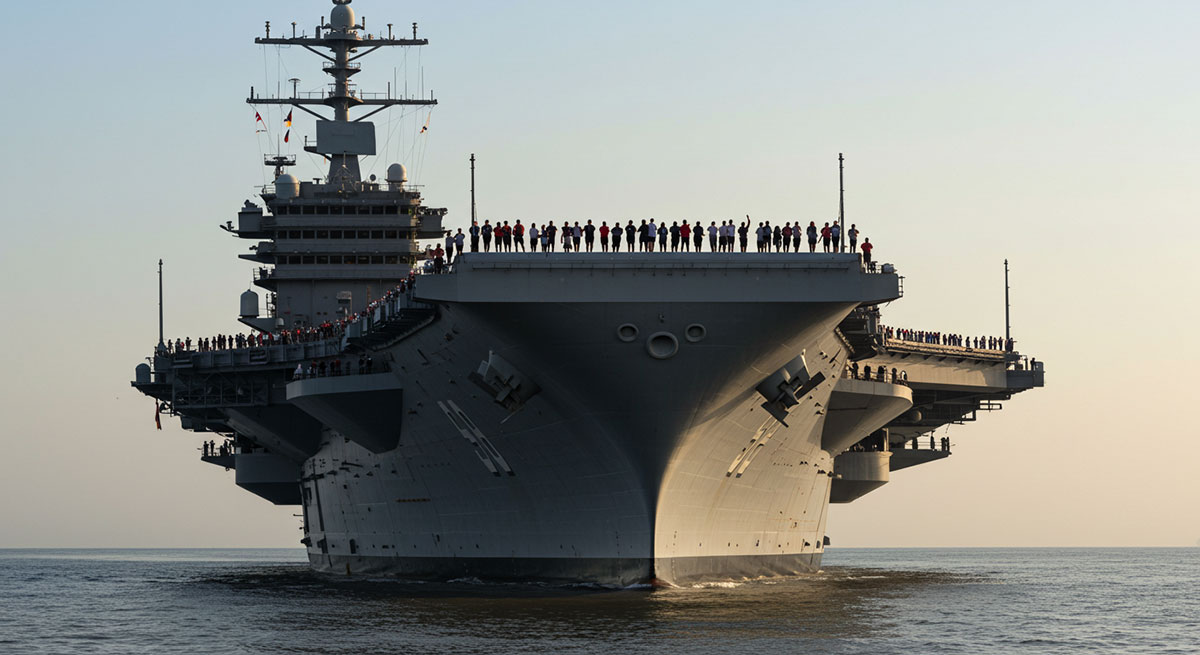Aircraft carriers, veritable floating cities, do they not represent a sort of pinnacle of engineering, at least of modern naval engineering? In their imposing presence there is a design detail, a not entirely obvious key, which determines their effectiveness: the subtle curvature of the flight deck, which is not there by chance, but is the consequence of decades of research and technological evolution.
Just as the arched shape of a bridge distributes the loads it must bear, the curvature of an aircraft carrier’s deck counteracts the enormous stresses generated in it by waves, wind and the weight of aircraft. Without such curvature, the hull would face a dilemma: to be too rigid and brittle or too flexible and unstable.
Early aircraft carriers, such as the legendary USS Enterprise of World War II, featured more pronounced curvatures. This robust design ensured strength, but reduced speed and increased fuel consumption. It was the solution at the time, when the priority was combat survivability rather than efficiency.

Today, aircraft carriers like the USS Gerald R. Ford exemplify the refinement of naval engineering. Thanks to advanced materials – high-strength steels and ultra-light alloys – and tools such as computational stress analysis, engineers have achieved subtler, but equally strong, curvatures. The result is a hull that cuts through water with less drag, saves fuel and maintains superior structural integrity, even under extreme conditions.
By Raúl Soriano, Senior Modeller in Amusement Logic’s Architecture Dept.






